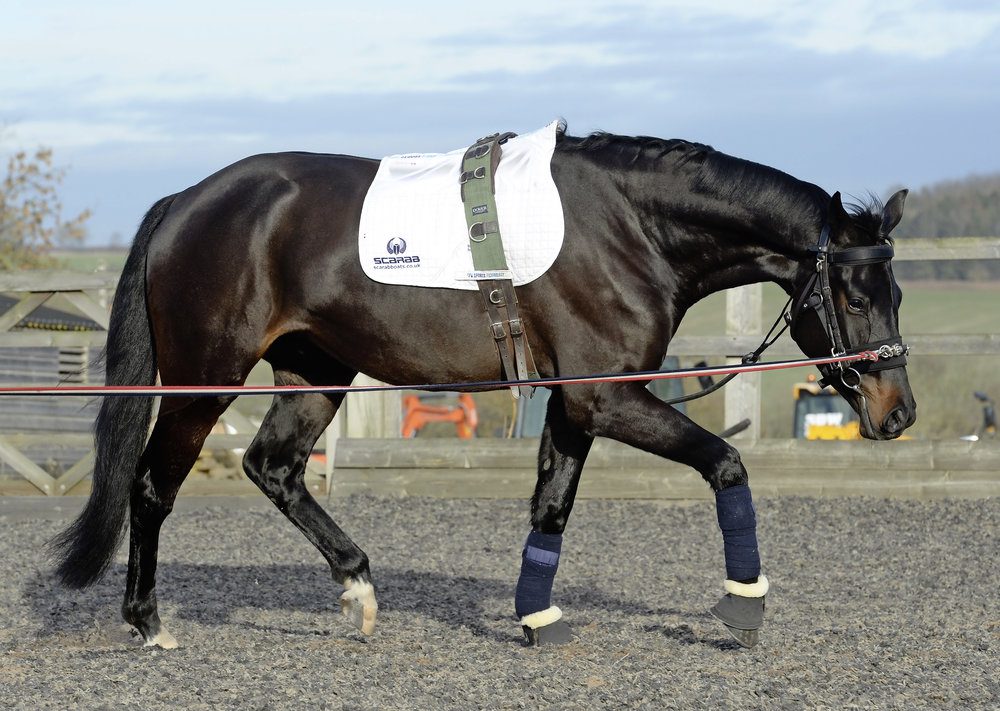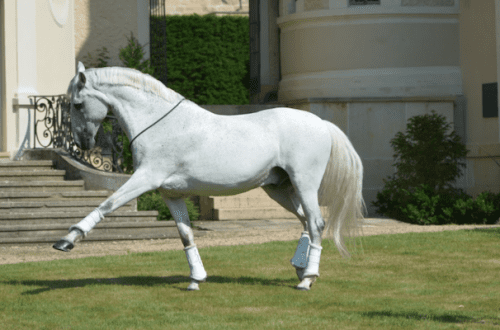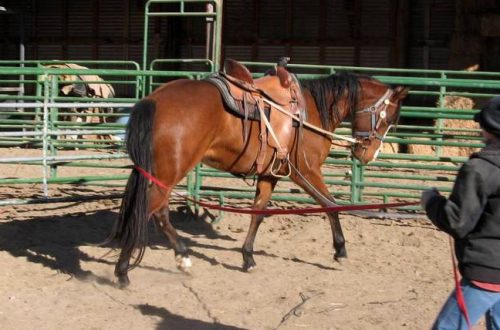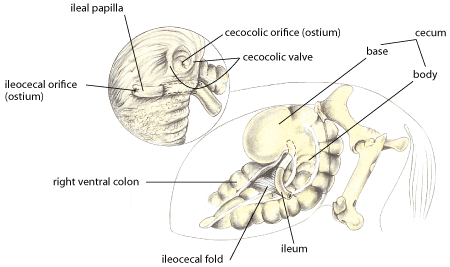
Chambon: how to use?
Chambon: how to use?
What is it for?
Chambon is considered a lunging tool, but some riders also use it when riding. It is designed to keep the horse from raising its head above a certain point. Properly applied champon helps the horse develop the muscles of the back, teaches him to round his back. It can help correct a struggling horse whose back is sagging due to a high head.
How to put a chambon on a horse?
The leather chambon strap is attached between the front legs of the horse to the girth, so you will need a saddle or a harness. The cord of the chambon is connected to the rings of the snaffle, passing through the rings in the forehead of the chambon, and is connected to a leather strap attached to the girth. The cord cannot be fixed to the leather strap tightly – it must slide from side to side to provide even pressure on both sides of the snaffle. The main pressure on the back of the head is provided by the leather nape strap of the champon. It presses on a fairly wide area, reducing the likelihood of nerve damage in it. The length of the chambon is adjusted using a buckle on a leather belt, which is attached to the girth.
How does shambon work?
- If the horse raises his head, he feels pressure on the back of his head and mouth. The picture below shows how shambon works. A red marker on the back of the head and in the mouth area shows us the places that the chambon “corrects” if the horse tries to raise his head. The snaffle is pulled back through the back of the head.
- If the horse lowers his head and stretches his neck, the champon, if properly fitted, should have no effect on him.
- It is important to note that chambon has the same effect if the horse sticks his nose out or, on the contrary, hides it. He not designed to “adjust” the position of the head. Chambon is only meant to encourage the horse to lower his head in response to pressure on the poll..
Chambon is adjusted according to the age and level of training of the horse. It can be tightened very slowly as the horse begins to respond to the pressure on the poll. You should not force the horse to keep his head below his withers, as in this position she won’t be able to work her back properly.
When used properly, chambon is very gentle on the horse and encourages him to straighten out. Any downward movement of the horse’s head/neck is rewarded with an immediate release, however it is important that the horse understands how he can release the pressure.
Chambon should not cause panic at the moment when it is pulled. Unlike many other lunging devices, the chambon allows the horse to stretch the neck to match the rhythm of the walk and canter, and to use the back for all gaits.
Chambon encourages the horse to stretch at the topline and stretch the occipital ligament that runs along the spine. Due to the stretching of this ligament, the main muscles of the back gain the ability to freely relax and work.
The use of chambon when lunging cavaletti or poles increases the strength of the horse’s back.
Risks of using shambon:
1) If the horse does not understand how to yield to the pressure on the poll, he may be very resistant to feeling the pressure up on the mouth and down on the poll. As a result, the horse may begin to glow. Chambon should be put on the horse only (!) on soft ground (not on cement or asphalt), otherwise, in case of panic, the horse can easily injure.
2) Since the principle of shambon is very simple, it is easy to get carried away and overwork, which can have a very negative effect on the horse’s back. Limit the level of tension and the time the horse is working with champon, increase these figures gradually, in accordance with the increase in the level of training of the horse. It is important that the horse is encouraged to stretch and not twist, as this way he can easily damage the occipital ligament.
3) This device not intended for use under a saddle as its purpose is to encourage the horse to round his back and tighten his abdominal muscles. Add a rider to your back and the back will be under severe stress. The weight of the rider will also prevent the horse from experiencing the effectiveness of the chambon. In addition, the benefits of working under the horse with devices that are attached to the snaffle, and their effect is not controlled by the rider, is highly questionable.
4) If the horse is not actively encouraged move and work backwards, then the chambon will very quickly put it on the front balance and you will not get the desired effect. To get the benefit of using a chambon, you need to be sure that your horse is able to lunge properly.
5) The pressure on the snaffle goes through the back of the head, so the snaffle can rise up to the teeth and this will train the horse to bite the bit when working under the rider. Chambon does not put the horse on the reins or prepare him to understand the actions of the rider’s hands, but it does help the horse develop the back muscles necessary to carry the rider without harm to the horse’s body.
6) Chambon cannot correct a horse that goes over the reins and twists its neck into a rollkur-like position. However, if you work with shambon above the poles, the situation may improve as the poles encourage the horse to stretch and lower his head.
A person who uses chambon in his work must be experienced and knowledgeable – only then his actions will bring the expected results.
Karen Nelson (source); translation by Valeria Smirnova.





